Microblade
Ideal Microblade:
Did you know that microblade needle taper and diameter will affect pigment flow, healing time, and stroke detail?
Quality Product: A microblading tool that is easy to use with good pigment flow, resulting in saving both time and effort. Many times, I have heard my clients tell me that they figured out an easier way to use a particular product. Quality products are not about figuring out how to best use an imperfect product. So, we are committed to making your procedure to be equal proportions of creation and technique by providing the ideal microblade.
2 Attributes of an Ideal Blade
There are two main factors that make an ideal microblade, these are taper and diameter. Through our own research and feedback from our base of professional clients, we were able to explain the importance of taper and diameter. We take our customer’s feedback very seriously. We believe that feedback and research are the only way to continue forward in an ever evolving industry.
Taper
Definition: The starting point of an unsharpened needle narrowing to a sharp tip.
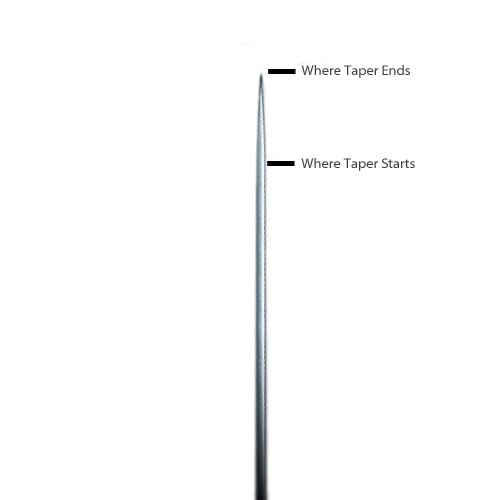
In the diagram, you can see how taper is measured, from the taper start point to the taper end point.
Most needle tapers range from 1mm to 4mm.
Our Microblades:
1.0 mm = Short Taper
3.0 mm = Medium Taper
4.0 mm = Long Taper
Microblading needles are fine and small in diameter and are prone to bending or breaking if the taper size is not right for the diameter of the needle. Our skin elasticity produces resistance, because of this resistance we have to apply a controlled amount of effort to puncture the microblade through. A good balance between thickness and taper is essential to avoid damage to the equipment or the client’s skin. The band that holds the single needles together also helps absorb some of the pressure caused by skin elasticity.
Needle taper also affects the sharpness of the microblade. As you can imagine, a sharper blade is easier to insert into the skin than a duller blade.
The diagram below shows two different tapers, one long and one short. The long taper needles provide better pigment flow, creating more crisp and detail lines.
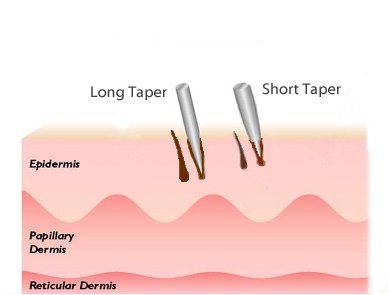
As you can see, the ink injected with a shorter taper is softer around the edges. This is caused by the ink flow, making short taper blades perfect for shading, which is why our fog flat microblade has a taper of 1mm.
Diameter
Definition: The thickness of a single needle within a microblade.
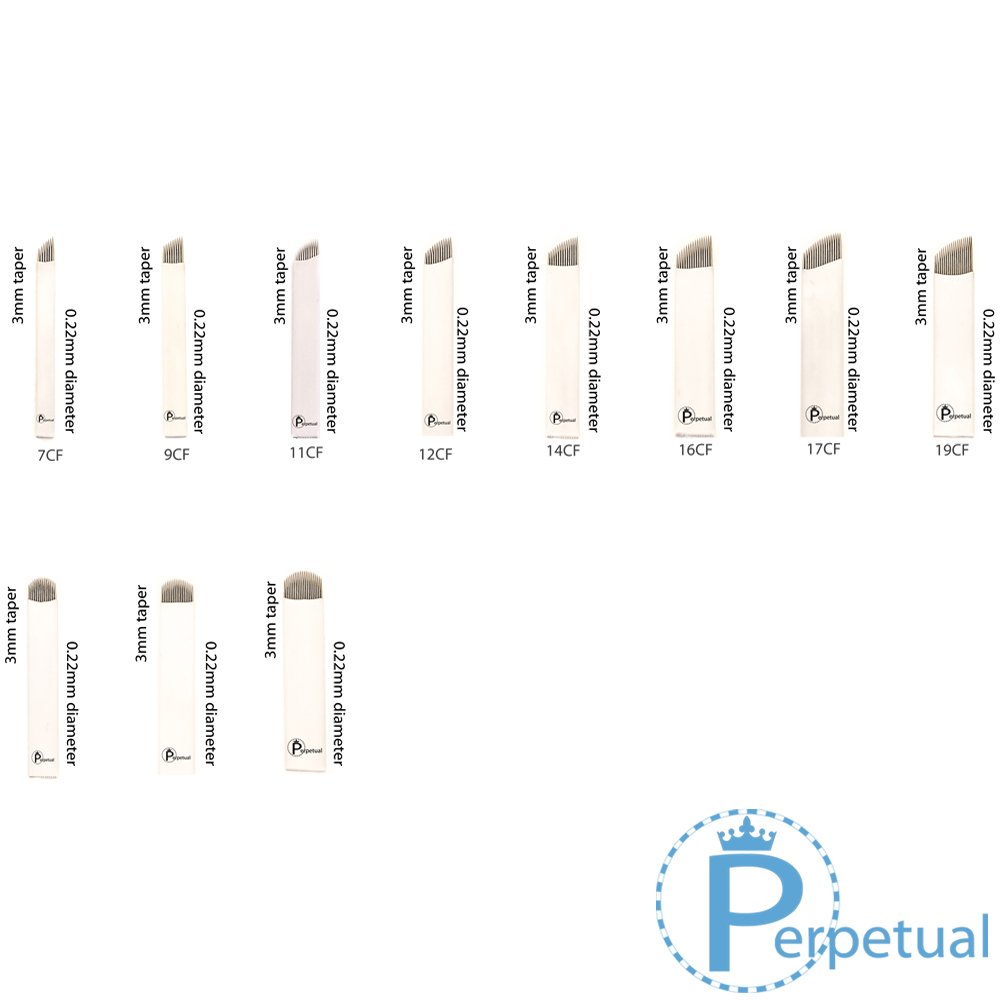
Microblade Needle Diameter: 0.20mm to 0.28mm. These blades will produce thicker lines. You can see our Microblade collection on U-Shaped and Curved Flat Microblades. These are also ideal for clients with thicker skin.
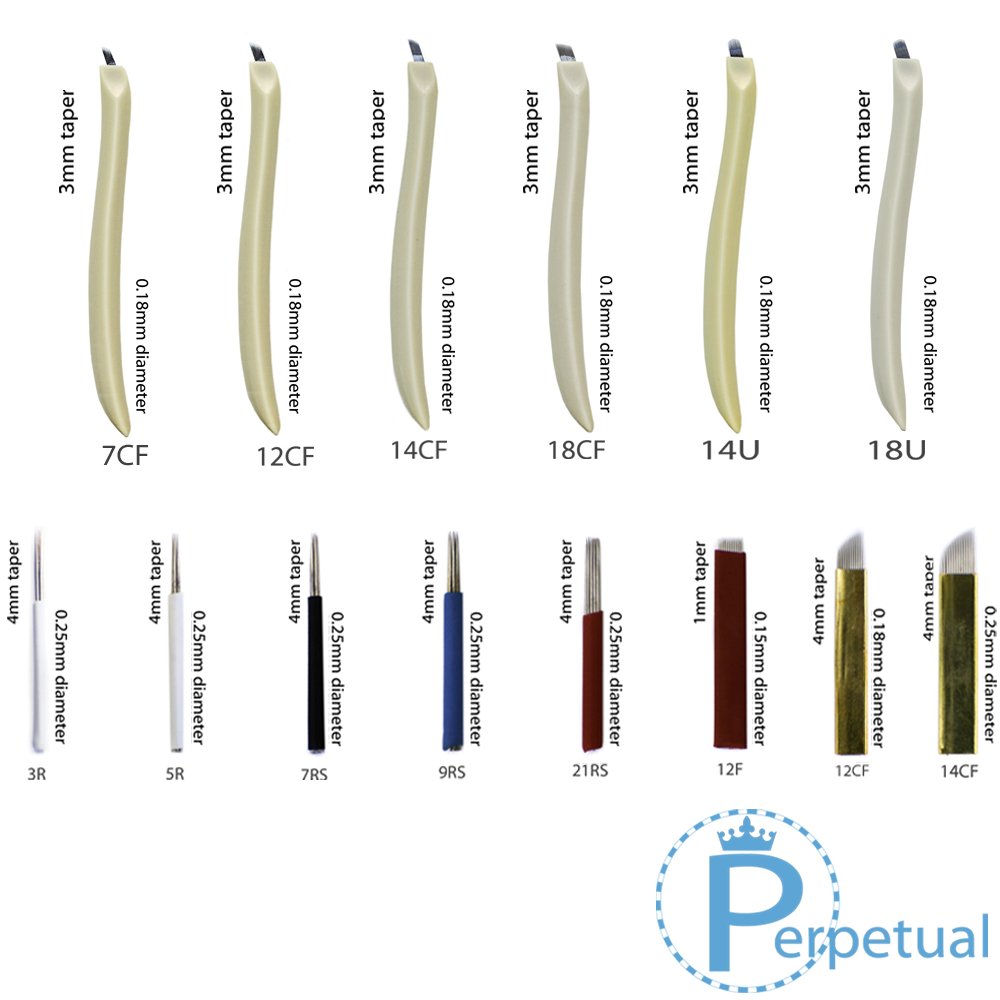
Nano Microblade Needle Diameter: 0.15mm to 0.18mm. These blades are sharper, will create more detailed lines, and faster healing time. (This is because of the smaller diameter size leading to smaller openings). These blades are ideal for clients with thinner skin type. You can see our Full Disposable Handle and Blade.
The Ideal Eyebrows: Natural looking eyebrows that fit the contour of our face, highlighting our features. To do this, technicians must learn to use different size and shape blades, resulting in hair strokes with different length, thickness, and curves. Also, using both nano microblades and microblades, a technician will be able to add depth to their work, producing the ultimate 3D eyebrows.




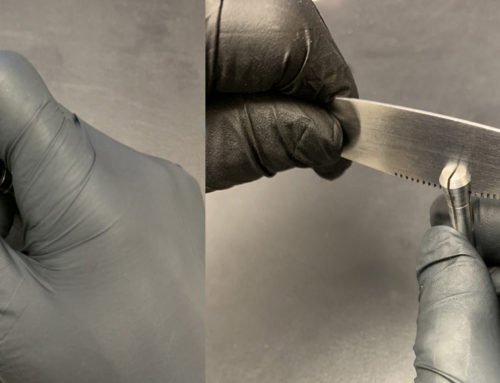
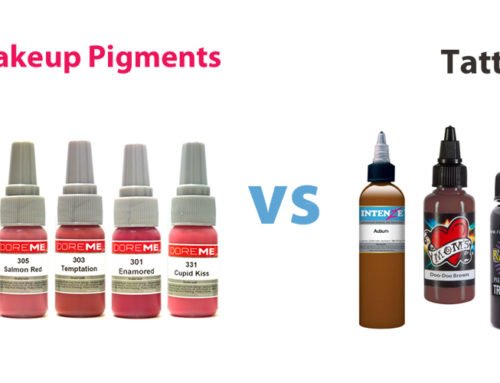


Leave A Comment